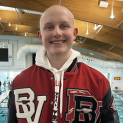Incidence and grades of adverse events during treatment for pediatric acute lymphoblastic leukemia

Mentor Name: Tamara Miller
Acute lymphoblastic leukemia (ALL) is the most common childhood cancer with an overall 5-year survival rate of over 90%. Despite high cure rates, the chemotherapy used to treat ALL can cause significant morbidity and mortality. This study aims to use data collected from patients treated over a 13-year period at Children’s Healthcare of Atlanta (CHOA) to describe the incidence and severity of toxicities that affect patients during each course of chemotherapy. We will include data from a cohort of 911 children, ages 0 through 19 years, with ALL from 2010 through 2022. Information about each toxicity will be manually abstracted; the presence, severity, and treatment details of the four key toxicities (hypotension, hypertension, hypoxia and anaphylaxis) will be identified; the rates of development of each toxicity will be summarized; and the ways that each toxicity is treated will be tabulated. This detailed information can be used by clinicians to understand the risks and management of each toxicity during chemotherapy and can be used to guide patients and families during treatment.

